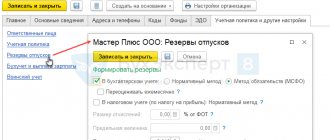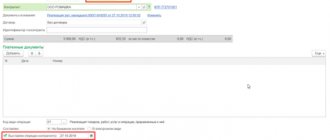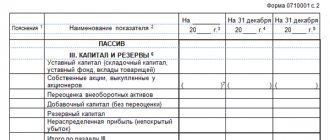Offsetting between organizations
Settlement between two legal entities is possible only with the consent of both parties. The possibility of offset is provided for by civil legislation (410 Civil Code of the Russian Federation). This article states that the obligation is fully or partially terminated as a result of offsetting a counterclaim of a similar nature.
The basis for making a decision on offset is the existence of receivables and payables between the parties to the agreement. As a result of this transaction, mutual repayment of obligations occurs without recourse to monetary settlements.
Settlement can be carried out only if three conditions are met at once:
- Legal entities that are parties to the offset must have counterclaims against each other.
- These counterclaims must be homogeneous.
- The counterclaim has already expired, is either not specified in the agreement, or is determined by the moment of demand.
Important! If the requirements of the parties are not homogeneous, or the deadline for fulfilling one of them has not yet arrived, then offset is possible only by agreement of the parties.
Homogeneous obligations are those that are expressed in a single currency and have the same method of repayment . Homogeneous obligations include obligations related to the fulfillment of the terms of different contracts, for example, contract and purchase and sale agreements, which are concluded between the same organizations. Let’s say that at the stage of signing contracts, a monetary form of payment was assumed, but since all the necessary conditions are met, the companies can carry out mutual settlements.
Important! If, according to one agreement, the obligation is expressed in kind, and according to the second - monetary, then they cannot be considered homogeneous. It is also impossible to recognize claims as homogeneous, one of which is denominated in rubles, and the other is expressed in foreign currency.
Offsetting in 1C Accounting 8.3
Accounting. Income from the sale of goods (works, services) and expenses for their purchase should be reflected in your accounts as usual. As a result, you, as a buyer of goods (works, services), will have accounts payable (balance on the credit of account 60 “Settlements with suppliers and contractors” or account 76 “Settlements with various debtors and creditors”) for their payment.
According to the law, netting is possible if one of the parties declares it. But in practice, the decision on netting is made by both parties. This is why many want to know how netting between organizations should be carried out correctly in 2021, so as not to violate current legislation.
To identify cases of mutual claims with debtors and creditors, the organization must maintain analytical records of receivables and payables for each counterparty.
Invoice 03/31/16 60 62 Reflects the operation of offsetting claims between “Standard”, “Guarantor” and “Perfect” RUB 12,901. Application for offset of claims, reconciliation report Question - answer on the topic Question: An application for offset of claims has been drawn up between LLC Stimul and JSC Salamandra. The offset will take place only if such a statement is received by the relevant party.
Accordingly, when carrying out offsets, the amount of claims to be repaid must be determined in the act without taking into account VAT. The parties transfer the amount of tax from the repaid debt to each other in cash. Copying of site materials is prohibited. All materials, any text information, graphics or video, as well as the site structure and page design, are protected by Russian and international legislation.
If the requirements are heterogeneous or the deadline for fulfillment of at least one of the obligations has not yet arrived. Offset can only be made by agreement of the parties. A correctly drawn up document like this can become a means of optimizing the payment system of both enterprises. Article 410. Termination of an obligation by offset Main clarifications General points The act of offset is applied if it becomes necessary to reconcile the general obligations of one company with another.
Settlement is an agreement between the parties to civil legal relations on the mutual termination of certain obligations to the established extent. For example, if the contractor performed work for the customer, while the customer delivered goods to the contractor, then each party can exempt itself from paying for the obligations performed by the other party in exchange for the fact that the other party, in turn, will also not pay for the fulfilled first obligation. Legally, such a condition can be enshrined in an offset agreement for the provision of services (or supply of goods).
It is important that (Article 410 of the Civil Code of the Russian Federation):
- the obligations had a sign of homogeneity;
- the deadline for fulfillment of obligations at the time of offset has arrived (exceptions - if it is not specified, is subject to a separate indication, or there are grounds not to comply with this condition by law).
Offsetting cannot be carried out if (Article 411 of the Civil Code of the Russian Federation):
- the obligation of any of the parties is related to compensation for harm to health, lifelong maintenance, payment of alimony;
- the obligation of either party has expired;
- the conclusion of a netting agreement is expressly prohibited by law or agreement.
Settlement can be legally established not only in an agreement, but also unilaterally - through a statement of offset drawn up by any of the parties to the transaction. But in this case, the party drawing up the application must, if necessary, be ready to prove in court that:
- the application was clearly received by the counterparty;
- the counterparty had no objections to the offset.
We suggest you read: Register an inheritance after the death of your father through the court
Drawing up a bilateral agreement on mutual settlement has such disadvantages, and many companies use it.
A scenario is possible in which a company’s counterparty has obligations to it (or it to the counterparty) under two different agreements. This is not of fundamental importance from the point of view of the possibility of mutual offset. The main thing is to consistently set out in the agreement the procedure for mutual offset of the parties’ claims with references to different agreements, and to correctly reflect the financial component.
How to make offsets between contracts of one counterparty comply with the requirements of the law {q} The main thing here is to make sure that the content of the legal relationship does not imply any obstacles to the offset of claims in terms of the provisions of Art. 410 and 411 of the Civil Code of the Russian Federation.
Thus, an obstacle to the offset of claims under several contracts with a counterparty may be the heterogeneity of obligations reflected in different contracts. For example, if one agreement is drawn up in rubles, and the other in foreign currency. In this case, netting between contracts of one counterparty will not be possible.
The type of debt in the tabular section can take one of the following values: “Receivable”, “Payable”. Check. Accounts receivable/payable account.
Attention
Agreement. The agreements, creditor and debtor under which mutual settlements were carried out are indicated. Type of calculations. The type of settlements with customers is indicated.
Filled out only if account 62.1 is indicated as the debt account. Credit. sum. The amount of accounts payable to be offset is indicated.
Deb. sum. The amount of receivables to be offset is indicated. The “Use auxiliary account” checkbox indicates that transactions will be generated not directly from accounts receivable to accounts payable, but using a auxiliary account.
When the checkbox is checked, the details for entering a subsidiary account and analytics for it become available.
The program analyzes mutual settlements with the supplier and shows the debt under each contract. To carry out offsets between contracts in 1C 8.3, it is required that in the document the amounts of the supplier’s debt and the debt to the supplier are the same.
Settlement is carried out for this amount. For this purpose, we correct the value in the “Settlement Amount” column. At the bottom of the document, the difference between accounts receivable and accounts payable is displayed; this difference should be equal to zero.
Accounting 8 » Offsetting VAT from advance payment during offset in 1C 8.3 Hello! There was such a change. In the 1C Accounting program, when filling out invoices for advance payment, the details of the agreement on account of which the advance was paid are no longer indicated. In the documents “Invoice received for advance payment” and “Invoice issued for advance payment” the “Counterparty Agreement” detail is no longer used.
It was not possible to make an adjustment according to the Analytics Agreement under 76. AB during netting and make a transfer to another agreement at the time of netting.
To do this, you need to indicate the following details: type of transaction - select “Debt offset”, to offset the debt - select “Buyer”, to offset the debt - “Our organization to the buyer”. Offsetting between organizations The program also allows you to offset the debt of a buyer or supplier in settlements with a third organization (the corresponding value is selected in the “On account of debt” field). In addition to debt offset, the standard “Debt Adjustment” document performs the following operations:
The selection of an operation is available in the “Type of operation” field.
Is there a legislative form established for the form according to which transactions for offsetting claims must be executed {q} Answer: No, such a form is not provided for by law, the document can be drawn up freely. But at the same time, do not forget to indicate in the application information that is considered essential for the test.
https://www.youtube.com/watch{q}v=1zcOuCrG7Io
Such data are the names of the parties, the amount of the debt and the amount of its repayment, the balance of the debt after the offset (if any), the grounds for the occurrence of obligations. This is due to the fact that the parties are not considered debtors until the obligations are fulfilled, therefore they cannot offset the debts among themselves.
At the same time, if the agreement does not specify a payment period, then you can set off at any time. It should be noted that legislative changes came into force on June 1, 2015, according to which offsets before the maturity of obligations are allowed. Procedure and documents You can apply for a credit in one of the following ways. Method 1.
Unilateral statement of offset. You can claim offset unilaterally. To do this, you will need to fill out an application in which you indicate the amount of mutual claims, the amount of their repayment (as a rule, the lesser of the two amounts of obligations), as well as the grounds for the occurrence of debts (agreements, acts, invoices).
If an organization has a debt to a counterparty-supplier, it can provide services to the counterparty or supply goods in exchange for the debt. Also, the counterparty-buyer can supply services or goods against his debt.
When settlement is not possible
Offsetting mutual claims is not possible for the following obligations:
- with an expired statute of limitations;
- related to compensation for damage caused to health/life;
- related to the collection of alimony;
- associated with the lifelong maintenance of individuals.
Important! Settlement is not possible if it is directly provided for by law. In addition, the legislation does not allow offset if one of the parties is pursuing a case to declare a person insolvent (411 of the Civil Code of the Russian Federation).
How is offset set off?
Offsetting between organizations is a business transaction that is documented. There are no specific requirements for completing this operation. In accordance with Art. 410 of the Civil Code of the Russian Federation, it is sufficient to draw up an application from one of the parties. There is no set form for this application, so it can be compiled freely. The main thing is that there is confirmation that the other company received the application and has no objections.
The application must be sent by mail, with a list of the contents and a receipt. This will confirm the fact that the counterparty received the application. Otherwise, if you go to court, this operation may be declared invalid. Another option for registering offsets is the deed of offset . Its unified form is also not provided, so it is compiled in free form.
Important! If the offset act does not indicate the date of offset, then the date of signing of this document is considered the moment of mutual repayment of obligations.
Regardless of which of the specified documents the offset is drawn up, it must contain all the circumstances of the offset. In the absence of detailed information, disputes may arise not only with counterparties, but also with the tax authorities. The settlement document must contain:
- obligations that are repaid by offset;
- the grounds for the occurrence of these obligations (agreements, acts, invoices);
- offset amount.
The document separately identifies VAT for each obligation . This way, both organizations will be able to correctly reflect the business transaction in their accounting.
Settlement of advance payment under a terminated contract
Let's look at the situation using an example. Gromada LLC receives an advance from Liven LLC against future deliveries. “Hromada” calculated and paid VAT on this advance. However, then the contract under which the advance was received is terminated and after some time a new one is concluded.
In accordance with paragraph 5 of Art. 171 of the Tax Code of the Russian Federation, you can deduct the amount of VAT calculated from an advance payment when terminating or changing the terms of the contract and when returning the corresponding advance amount.
The return of the prepayment is an obligation of the supplier, which means it can be repaid by offsetting mutual claims in accordance with Art. 410 of the Civil Code of the Russian Federation. This is stated in the Letter of the Ministry of Finance of the Russian Federation dated October 31, 2018 No. 03-07-11/78172.
Consequently, the VAT paid on the advance by Hromada can be deducted if the obligation to return the advance payment was terminated by offsetting a mutual claim.
We recommend you the cloud service Kontur.Accounting. Keep records of settlements with suppliers and customers. Control payment deadlines. With Kontur.Accounting you will know exactly who owes you and who you owe. We give all newbies a free trial period of 14 days.
VAT upon offset
To date, offset under the Civil Code of the Russian Federation in terms of debt existing under existing agreements and representing a form of debt payment does not lead to any consequences in relation to value added tax. And this is even despite the fact that the amount of VAT is always indicated in the documents for registration of offsets. This is due to the fact that the deduction of VAT is not associated with such a fact as payment of this tax.
In order to make a deduction for purchases in the Russian Federation, the following conditions must be simultaneously met:
- the purpose of the purchase is to use it in transactions subject to VAT;
- the purchase has been capitalized;
- availability of a correctly executed invoice (errors can be critical for processing a deduction).
In this case, offset represents the mutual repayment of obligations that do not in any way affect the fact of the deduction.
Previously, one of the mandatory conditions for obtaining a tax deduction during offset was the following: payment by the debtor company of the tax amount by a separate payment order. That is, mutual obligations were repaid only within the limits of the principal debt, and VAT was transferred in money. When carrying out offsets, it was necessary to take into account both the actual and book value of the products. This was due to the fact that VAT deductible was calculated precisely from the book value. And VAT on amounts transferred by payment orders was calculated from the purchase price of the goods. Therefore, the transferred amount and the amount presented for deduction often differed from each other. These differences have long raised many questions and debates. The requirement to transfer VAT in a separate amount was abolished in 2009. And today, when registering a mutual offset, VAT deduction can be issued in the general manner. That is, the offset is applied to the full amount of the debt, including VAT.
Requirements for the netting act
According to paragraph 1 of Article 9 of the Accounting Law, all business transactions carried out by a trade or public catering enterprise must be documented with supporting documents, which serve as primary accounting documents.
Primary accounting documents are accepted for accounting and tax accounting if they are drawn up in the form contained in the albums of unified forms of primary accounting documentation, and documents whose form is not provided there, including the statement of reconciliation of calculations, must have the following mandatory details:
- Title of the document;
- date of document preparation;
- name of the organization on behalf of which the document was drawn up;
- content of a business transaction;
- measuring business transactions in physical and monetary terms;
- the names of the positions of the persons responsible for the execution of the business transaction and the correctness of its execution;
- personal signatures of these persons.
According to clause 3.11 of GOST R. 6.30-2003 “Unified documentation system. Unified system of organizational and administrative documentation. Requirements for the preparation of documents”, approved by Resolution of the State Standard of Russia of March 3, 2003 N 65-st “On the adoption and implementation of the state standard of the Russian Federation” (hereinafter referred to as GOST), the date of the act is the date of the event. In this case, documents issued by two or more organizations must have one (single) date.
The date in the document is drawn up as follows: the date January 15, 2021 should be drawn up as 01/15/2020. A verbal-numeric method of formatting the date is allowed, for example, January 15, 2021, as well as formatting the date in the sequence: year, month, day of the month, for example: 2014.01.20.
Based on clause 3.12 of GOST, the registration number of a document consists of its serial number, which can be supplemented at the discretion of a trade or public catering enterprise with a case index according to the nomenclature of cases, information about the correspondent, performers, etc. The reconciliation report of mutual settlements is drawn up by two organizations. In this case, the registration number of such a document (drawn up jointly by two or more organizations) consists of the registration numbers of the document of each of the parties to the act, entered through a slash in the order in which the authors are indicated in the document.
In accordance with clause 3.22 of GOST, the “Signature” requisite includes: the name of the position of the person who signed the document (full if the document is not drawn up on a document form, and abbreviated - on a document drawn up on a letterhead); personal signature; decryption of signature (initials, surname).
The act of mutual settlement indicates all parties involved in its implementation. The main part states:
- Party-1 is a creditor of Party-2 under agreement No. ___ dated November 11, 1111, the amount of obligations is 11,111 rubles, including VAT 11,111 rubles;
- Party-2 is a creditor of Party-3 under agreement No. ___ dated November 11, 1111, the amount of obligations is 11,111 rubles, including VAT 11,111 rubles;
- Party-3 is a creditor of Party-1 under agreement No. ___ dated November 11, 1111, the amount of obligations is 11,111 rubles, including VAT 11,111 rubles;
- The parties agreed to offset mutual claims in the amount of 11,111 rubles, including VAT of 11,111 rubles. (If some amounts are greater, then the offset is made for a smaller amount).
- After the offset of mutual claims, the debt of Party-1 to Party-3 is 11,111 rubles. etc. There must be signed statements of reconciliation of calculations before and after the offset.
Sample act of offsetting mutual claims of three legal entities
View another sample act...
Accounting for netting
When offset, the fact of receipt of receivables (payables) is reflected; this does not lead to the emergence of income or expenses. In accounting, offsets are reflected in subaccounts opened for a separate counterparty to the accounts:
- 60 “Settlements with suppliers and contractors”;
- 62 “Settlements with buyers and customers”;
- 76 “Settlements with various debtors and creditors.”
The netting is reflected by the following posting:
D60(76) K62(76) – termination of a counter-obligation by offsetting mutual claims.








